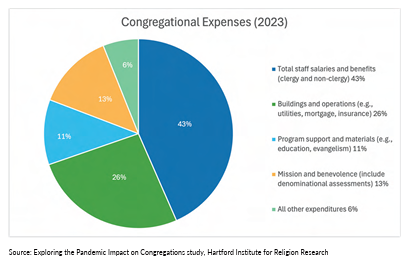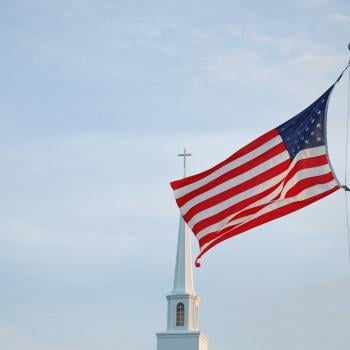One of the slowest things to rebound since the pandemic was not retail or restaurants but religion, particularly church giving since the global lockdown on COVID-19 was released. Despite what is seen in the news regarding the exorbitant paydays of global preachers, churches operate on the gifts from others. Why do they work that way? Money circulation.
Dollars and cents aren’t supposed to stay in storage, so “dollar in, dollar out.” This is a Biblical principle: “Bring the full tithe into the storehouse, so that there may be food in my house” (Malachi 3:10 NRSV). After that part of the scripture, saints want to complain how people are abusing this “test” Malachi prophesized. Remove personal angst and current headlines. Name a single church that can open its doors, keep the lights on, turn on the AC, and give everyone something to enjoy with no money.
Go ahead. We’ll wait…
 The church could be home to an old, rugged cross and 53 faithful members or a shimmering convention center hosting thousands on multiple campuses. It doesn’t matter.
The church could be home to an old, rugged cross and 53 faithful members or a shimmering convention center hosting thousands on multiple campuses. It doesn’t matter.
Without money, the saints may as well meet outside in a park. That is why the tithe is essential. Every Christian must do their part to keep the lights on, the homeless fed, the children entertained, the mission field equipped, and the sanctuary not feeling like a sauna. None of those comforts happen without the tithe.
So, what does it say that a recent Faith Communities Today national survey shows that over half of churches (62%) survive post-COVID, yet none have caught up with inflation? Does this mean we should give more? Does it mean the church should spend less? Is there any silver lining to this philanthropic giving cloud? Yes, and you’ll be surprised how.
Before we delve into those questions, do you want to stay in touch with other faith-based issues “close to home?” Subscribe to our free newsletter and never miss what’s being said about the Church or what Christians can say back.
Inflation and In-Giving: Burn, Baby, Burn

One of the core takeaways from this startling survey is “the average church brings in $165,000 each year and spends $160,000.”
MEMO to all church haters: How many pastors would do the job for $5K annually? Let alone everyone else work for free?! Is anyone signing up for that ministry? Probably not, if you’re wired that way. Now, ask the interested prospective church members. The line forms to the left, and it goes out the door. This is a spectacular warning—for every dollar they get, they are putting back in the church and into the communities they serve. You want to hear this when you give your tithe to that storehouse. And that is a post-COVID metric.

Another core takeaway was “around 3 of 5 congregations (62%) receive more money than they spend.“
Those sounds you hear are the same groaners bellowing, “Hurrumph! I told you so.” That’s astute, but I have a quick question: Have you ever had an electricity bill go up insurmountably? For example, the April to May HVAC bill in North Texas. It’s incredible how that surplus money will go fast because of the new bill during the new season. If they don’t receive more money than they spend, they will close those doors faster than a Party City or a Bed, Bath & Beyond.
85% of congregations’ income comes from participant contributions, including tithes and offerings.
This is where churches can’t win. If they bring in a fair amount of money, haters hold it against them for hoarding money. If they don’t, the mission to reach the lost faces failure. Although it may be considered sacrilege, churches are businesses. They have bills like any business. From utilities to overhead, technology to insurance, they need money for all of that. Unlike most companies, churches rely on their “shareholders” to donate to the cause.
It’s All About the Numbers

Not surprisingly, donations, offerings and tithes haven’t caught up to pre-pandemic levels in church. Americans have struggled with the local economy since people were allowed out of their houses. Bankrate shares that while the current inflation rate in the U.S. is 2.8%, consumer prices are 23.3% more expensive than in 2020. That means if someone is used to spending $1,000 monthly on bills, they must find $1,233 for identical bills.
Whether it speaks well of faith, that budget pain will affect tithing and offering. Is that right? No. Is it expected? Absolutely.
Churches also feel pain because they rely on others’ generosity. The current cumulative inflation rate in America’s churches is 39.7%, considerably higher than in the world, because those same people feel out there and hold it in their pockets when they go to church on Sundays.
The Faith Communities Survey speaks of other areas of church giving that have been uncovered and endangered. While 22% of congregational financial health has improved in the past five years, 38% of national churches are operating in the red or barely able to pay their bills. Other areas of faith and finances explored through the study include:
- Only 31% of clergy advise they are in “good to excellent” financial health. (That’s out of approximately 600,000 full-time pastors and chaplains.)
- For a third of congregations (33%), participant contributions are their only income source. Of congregations that receive income beyond participant donations, 58% receive income from just one additional source (e.g., endowments, investments, capital campaigns)
- Roughly 20% of church members use online church giving, which means whatever is collected in the plate or the box in the back is what the church has to pay bills that week.
What’s odd is that income even varies by denomination, and per capita income is assorted by religious family.
- Mainline Protestant congregations have a per capita of over $2,700
- Evangelical Protestant congregations about $2,000
- Non-Christian congregations have about $1,800
- Catholic/Orthodox Christian congregations have just over $1,500.
In Catholic, Orthodox, evangelical Protestant, and non-Christian congregations, the per capita income tends to be higher in congregations where more than half of the worship attendees are over 65. This indicates that older participants contribute more financially than younger ones, like those that target Gen-Z and younger church members.
Inflation was as high as 9.1% in 2022, and although the national economy is nearing the Federal Reserve’s median of 2%, churches can’t ignore the fact that people are still catching up. It feels like inflation is in the double digits. As long as church members hold their budgets together with duct tape and twine, church giving will continue to flounder despite their faith and zeal to spread God’s Word.














